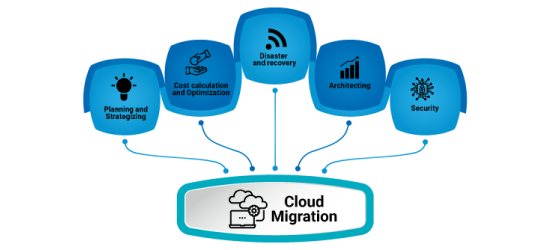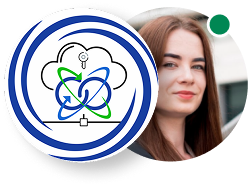
| Author: Kamlesh Kumar | Published: 31-May-2021 |
Cloud computing is a critical component of digital transformation, especially now with the current work-from-home status most companies have adopted. Cloud has made even massive enterprises who traditionally worked out of on-premises IT environments, rethink their strategies. The goal now is not just to migrate to the cloud but become as native in applications and work-flows as possible.
But migrating applications to the cloud calls for a structured plan. Without this, an organization can easily get bogged down by the myriad possibilities and permutations one can encounter in the migration process. This has significance in terms of jeopardy to business continuity as well as costs. Loss of revenue can run into millions of dollars.
Elements of successful and secure cloud migration
Planning and strategising
Successful cloud migrations demand planning at a very fundamental level, and, of course, a capable team to handle any anomaly that might be encountered. The plan needs to estimate phase-be-phase time frame, since the timeline for a complete cloud migration can run into months, and several facets have to be put into place to ensure there is no break in service. The timeline is directly proportionate to the business size & complexity, data volumes and total number of applications that need to be migrated—and priority of applications to be migrated. Finally, the business needs to decide the best-fit cloud provider for their needs.
Cost calculation and optimisation
Cost is always a major factor in any plan/analysis. And for the migration to make sense, this aspect must be dealt with first if the migration is to deliver a good RoI.
Detailed preparation and a step-by-step strategy can help control costs. A general rule of thumb, though, is to begin by migrating to a hybrid cloud
Once the application migration-priority list is complete, and wherever possible, applications are revamped to ensure they are truly cloud native, the actual process is ready to begin.
Disaster and recovery
Whether you believe in Murphy’s law or not, it is critical to have a robust disaster recovery plan in place to ensure your data is recoverable in the event of any disaster—manmade or natural. The best cloud disaster recovery service should allow you to seamlessly allow business to proceed as usual, from anywhere, at any time and using any device.
Think of Cloud Data Backup and Recovery services as an insurance policy. You hope you never need it but just knowing that it’s there instills peace of mind.
If you need help with your back up and disaster recovery, Teleglobal can help you secure a robust data recovery solution that can address any threat to your data & security.
Architecting
Ensure you pick the right consultant/architect to implement your migration. The right expertise will result in a smooth migration and ensure all requirements are covered during and post migration.
Failure to engage the right consultant/architect can undermine the best preparations and lead to enormous cost and time-overruns.
As an independent consultant and partner to the top cloud providers, Teleglobal has the experience and depth of talent to help you plan and address any problem you might face during and post cloud-migration. Contact us for a no-commitment consultation today.
Security
The cloud migration process can give cyber criminals opportunities to steal sensitive data and/or sabotage your business systems. Working with a proven Cloud Managed Services Provider will ensure that there are no gaps, such as ports left open or compromised firewall in the system or security risks, like an outdated software or agent that can be exploited.
Migration Methodology
To eliminate any risk to cloud security, organizations need to adopt a phase-by-phase approach.
A phase-wise, planned migration methodology ensures improved reliability and performance, secure operations, optimized costs, and higher focus on applications and core requirements that drive business-value.
Preparing a Successful Migration Plan
Migration Outcomes with Teleglobal
Teleglobal’s extensive experience in cloud migration to various cloud models, such as public, and hybrid clouds is backed by The Teleglobal Migration Model, which uses agile methodologies for speedy and effective migrations. Our model has consistently been proven to yield desirable business outcomes, including:
Need help with your cloud migration? Call us now for a courtesy consultation
 close
close

Hi there! At TeleGlobal, we turn your cloud vision into AI-accelerated reality. What challenge can we help you solve?
Powered by ![]() teleBot
teleBot